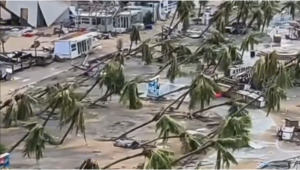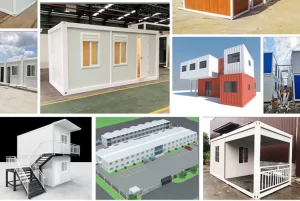In recent years, with the aggravation of global climate change, extreme weather events occur frequently, among which typhoons, as one of the most destructive natural disasters, bring great threats to the safety of people's lives and properties. Especially in the face of super typhoons such as Typhoon Capricorn, the 11th typhoon in 2024, its strong winds and torrential rainfall pose a severe test to traditional buildings.
However, in this context, prefabricated houses (or assembled buildings) have gradually become an important choice to withstand disasters with their unique advantages.

Typhoon “Capricorn” landed in Hainan
Definition and characteristics of prefabricated houses
Prefabricated houses, also known as assembled buildings, are a type of construction method in which the components of a building are pre-fabricated in a factory and subsequently transported to the construction site for rapid assembly and installation.
Compared with traditional construction, prefabricated houses have significant advantages such as fast construction speed, controllable quality and high durability. This construction method not only improves the construction efficiency, but also ensures the accuracy and consistency of the building components through the factory production mode, which improves the stability and safety of the overall building.

Multiple prefabricated houses for disaster prevention
Second, the advantages of prefabricated houses in typhoon disasters
Excellent wind resistance
In the face of super typhoons such as “Capricorn”, prefabricated houses show their unique wind resistance advantages. Taking Hong Kong AluHouse Company Limited (Aluminum Tourist Home) as an example, the prefabricated houses produced by the company adopt modular assembly method and use environmentally friendly aluminum materials to create an original aluminum alloy structure, which is claimed to be able to withstand typhoon of grade 16.
During the test of Typhoon Mangosteen, the company's prefabricated housing projects, such as mobile commercial streets and tourist lodgings, were not affected, fully verifying the reliability of its wind-resistant performance. For super typhoons like “Capricorn”, the reasonable wind-resistant design of prefabricated houses and the application of lightweight materials can effectively minimize the damage caused by wind pressure and ensure the safety of buildings during disasters.
Rapid Construction and Emergency Response
In typhoon disasters, time is often life. Prefabricated houses can be assembled and installed in a short period of time due to their fast construction speed, providing strong support for post-disaster reconstruction and emergency evacuation.
After Typhoon Capricorn, if traditional buildings are severely damaged, it will take a long time to repair or rebuild them, while prefabricated houses can be quickly set up to provide temporary shelters or refuge for the affected people in a timely manner.
High quality control and durability
Prefabricated houses are manufactured in factories, where most of the manufacturing processes are completed, and the accuracy and quality of the building components are ensured through a strict quality control process. This factory-based production model not only improves production efficiency, but also reduces the complexity and uncertainty of on-site construction, thus enhancing the durability and safety of the overall building.
In natural disasters such as typhoons, prefabricated houses are better able to withstand wind and rain, maintaining the stability and integrity of the building.
Flexible design and adaptability
Prefabricated houses are also characterized by flexible design and adaptability. According to the wind level and climate conditions in different regions, prefabricated houses can be designed and optimized to improve their wind resistance and durability.
At the same time, prefabricated houses can also be modularized and expanded according to actual needs to meet different needs. This flexibility and adaptability makes prefabricated houses have a wider application prospect in areas where natural disasters occur frequently.
Conclusion
In summary, prefabricated houses show their unique advantages in typhoon disasters. From excellent wind resistance to fast construction and emergency response, to quality control and strong durability and flexible design and adaptability, prefabricated houses provide a strong guarantee against natural disasters such as typhoons.
With the aggravation of global climate change and the frequent occurrence of extreme weather events, prefabricated houses will become one of the important directions for future construction development. Through continuous technological innovation and improvement of supporting policies, prefabricated houses will play an important role in more fields, protecting people's lives and properties.
Post time: 09-09-2024







